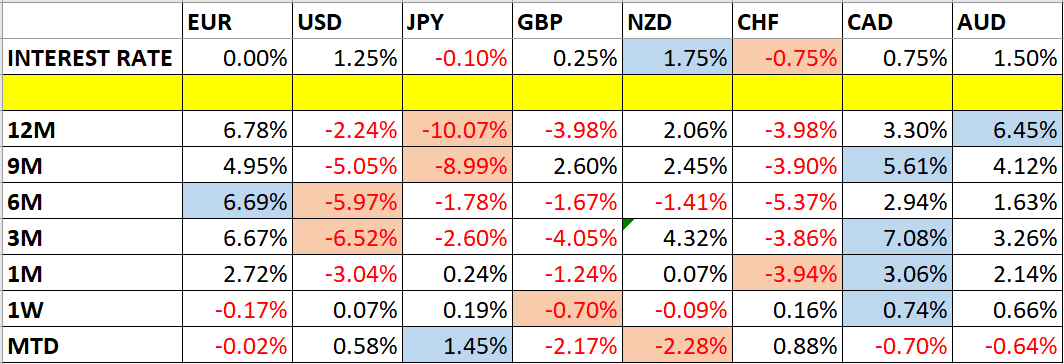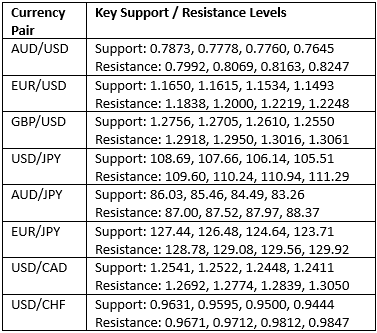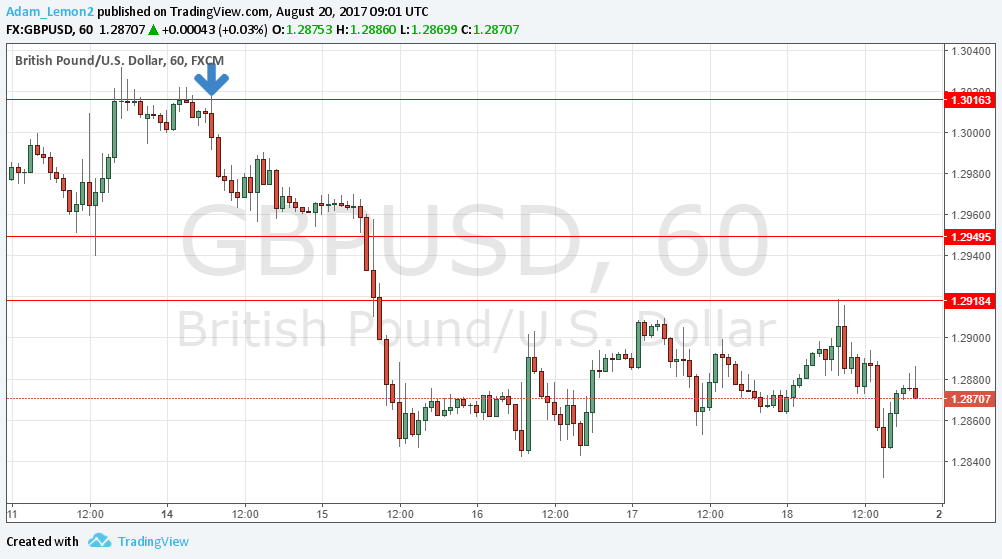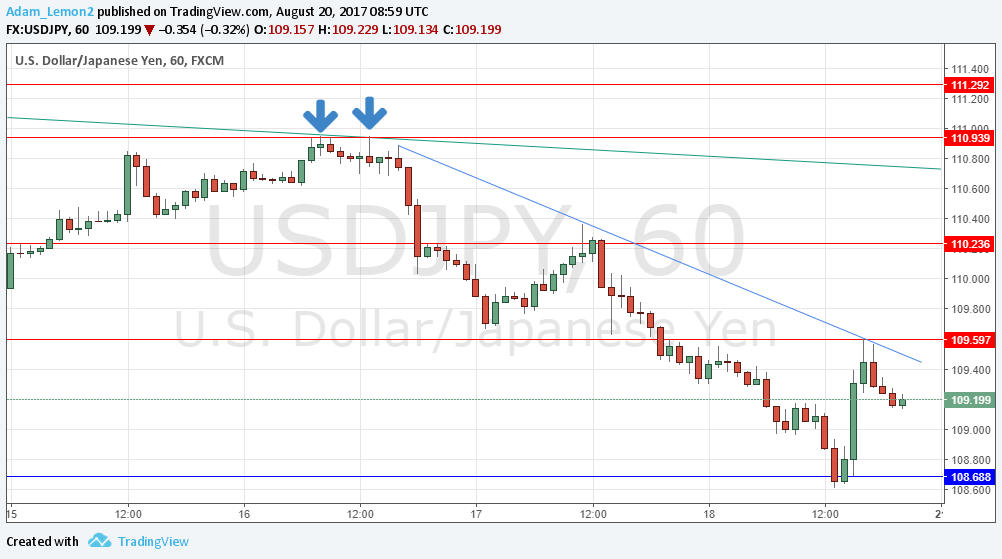This week we’ll begin with our monthly and weekly forecasts of the currency pairs worth watching. The first part of our forecast is based upon our research of the past 16 years of Forex prices, which show that the following methodologies have all produced profitable results:
- Trading the two currencies that are trending the most strongly over the past 3 months.
- Assuming that trends are usually ready to reverse after 12 months.
- Trading against very strong counter-trend movements by currency pairs made during the previous week.
- Buying currencies with high interest rates and selling currencies with low interest rates.
Let’s take a look at the relevant data of currency price changes and interest rates to date, which we compiled using a trade-weighted index of the major global currencies:
Monthly Forecast August 2017
For the month of August, we forecasted that the best trades would be long EUR/USD and AUD/USD, and short USD/CAD. The performance to date is negative:
Weekly Forecast 20th August 2017
Last week, we made no forecast, as there were no strong counter-trend movements.
This week, we again make no forecast, as there again were no strong counter-trend movements.
This week has been dominated by relative strength in the Canadian and the Australian Dollars, and relative weakness in the British Pound.
Volatility was lower than it was last week, with approximately 26% of the major and minor currency pairs changing in value by more than 1%. Volatility is likely to be at least a little lower still over this coming week.
You can trade our forecasts in a real or demo Forex brokerage account.
Key Support/Resistance Levels for Popular Pairs
We teach that trades should be entered and exited at or very close to key support and resistance levels. There are certain key support and resistance levels that should be watched on the more popular currency pairs this week, which might result in either reversals or breakouts:
Let’s see how trading two of these key pairs last week off key support and resistance levels could have worked out:
GBP/USD
We had expected the level at 1.3016 might act as resistance, as it had acted previously as both support and resistance. Note how these “flipping” levels can work well. The H1 chart below shows the how the price bounced bearishly off this level shortly after last Monday’s London Open, which is typically a very good time to trade this currency pair, printing a bearish outside candlestick shown in the chart below at the downwards arrow. This candlestick broke down immediately, giving an excellent short trade entry opportunity. The maximum reward to risk ratio reached to date has been very good, at more than 5 to 1.
USD/JPY
We had expected the level at 110.94 might act as resistance, as it had acted previously as both support and resistance. Note how these “flipping” levels can work well. The H1 chart below shows the how the price bounced bearishly off this level during last Wednesday’s London session, giving an initial false entry, before rejecting the level decisively shortly after the New York Open, which is typically a good time to trade this currency pair. The price printed a bearish pin candlestick shown in the chart below at the downwards arrow, which broke down right away and gave an excellent short trade entry opportunity. The maximum reward to risk ratio reached has so far been an extremely impressive 9.5 to 1.
You can trade our forecasts in a real or demo Forex brokerage account to test the strategies and strengthen your self-confidence before investing real funds.





